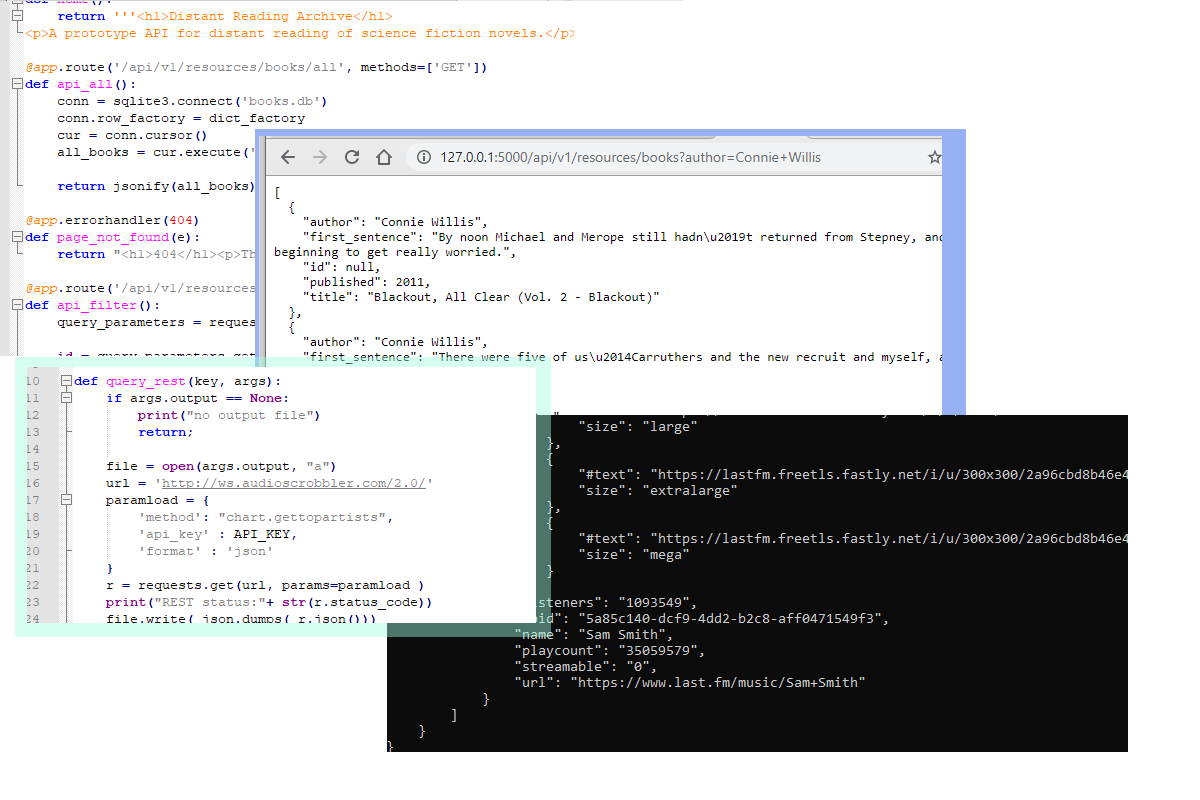Started experimenting on RESTful API.
So I chose filter for queried data.. sqlight3 allowed developer to register a processing function to deal with our own data. This technique is not uncommon. Often I'm lazy to work on functionalities that already provided. There are plenty of new things waiting for exploring, right? Time is precious! Here the filter function put data into dict objects.
This is an redesigned example that querying REST API provided by Last.gm. Not completed yet. As the tutorial designer mentioned that exploiting the APIs may get me be banned from using... I took time to create stages trying to reduce my query and still able to make bunch of tests on data analysis.
Package argparse here is interesting. Its documentation is not clear.... Its weird. I read more definition on other's experiment... With all those spec, it is an interesting tool that could dynamically raise suggestions and help information. Quite good!
Actually, I always doubt the necessity of the name 'RESTful API' or microservice... There're already web pages for years. Yes, you read it right, 'WEB PAGE'. If any programmer ever worked on assembling web pages: filling queried results into blank area, and then sending out the whole content, REST API on server side seems to be sending data without decoration....
I didn't mean that modern technique is simple. Decode the structure designed by others is a kind of art. I do respect all designers. I just think passing data between devices is not something new.... Maybe, it's because I wrote network sockets in very early days....
It's kind of difficult for me to choose section of codes that represents REST API... This is an example of server-side web API.
So I chose filter for queried data.. sqlight3 allowed developer to register a processing function to deal with our own data. This technique is not uncommon. Often I'm lazy to work on functionalities that already provided. There are plenty of new things waiting for exploring, right? Time is precious! Here the filter function put data into dict objects.
At this example, the designer is humble, saying that this can only be called as WEB API. REST API are more carefully defined in structure.
Trying on using other's REST API are interesting. Here are URLs to query information about astronaut and international space station. REST examples without authentication.
Trying on using other's REST API are interesting. Here are URLs to query information about astronaut and international space station. REST examples without authentication.
This is an redesigned example that querying REST API provided by Last.gm. Not completed yet. As the tutorial designer mentioned that exploiting the APIs may get me be banned from using... I took time to create stages trying to reduce my query and still able to make bunch of tests on data analysis.

Comments
Post a Comment